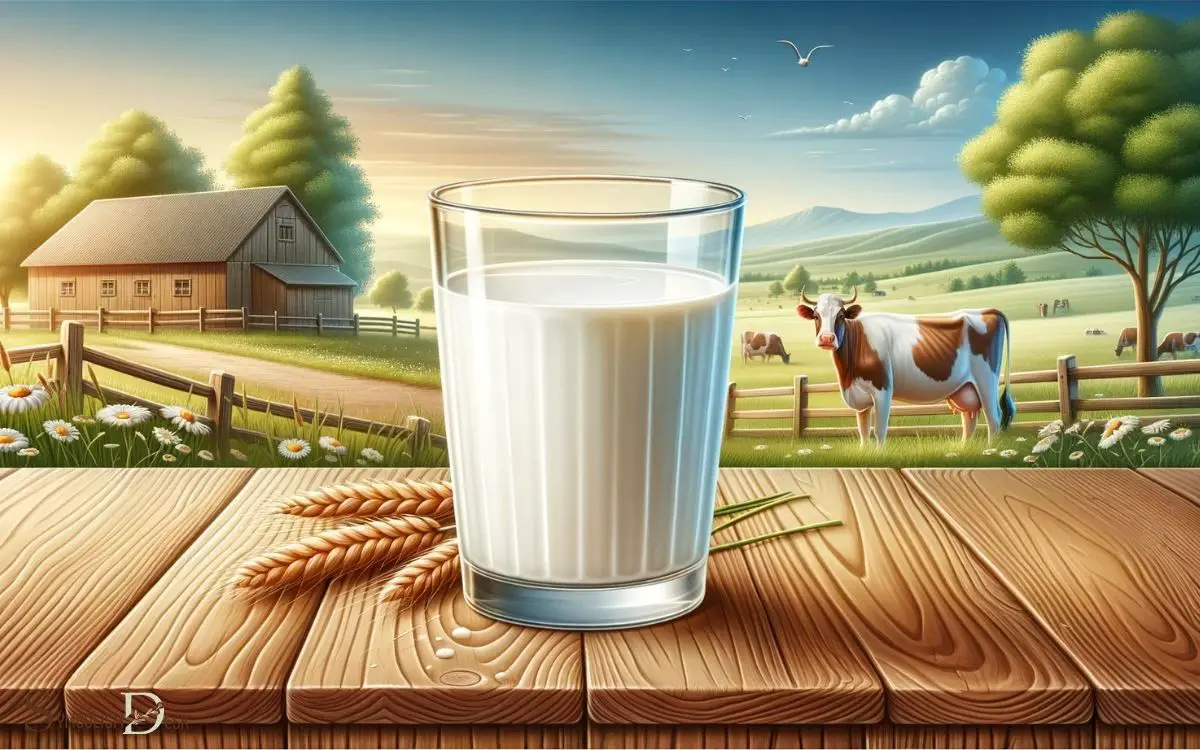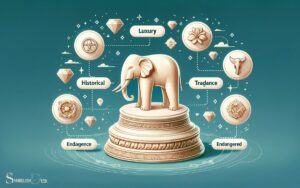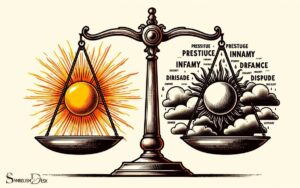What Is the Symbolic Meaning of Milk? Fertility!
The symbolic meaning of milk encompasses notions of purity, fertility, abundance, and nurturing across various cultures and historical contexts. As a universal symbol, milk represents life-giving nourishment and maternal care, often appearing in religious rituals, myths, and folklore.
Milk’s symbolism is deeply ingrained in human society due to its:
- Purity: It is often associated with cleanliness and innocence.
- Fertility and Abundance: Milk is linked to the earth’s fecundity and prosperity.
- Nurturing: It symbolizes the mother-child relationship and care.
- Life and Sustenance: As a basic food, it denotes life and sustenance.
For example, in Greek mythology, the Milky Way was created from the milk of the goddess Hera, symbolizing the heavens’ provision.
Milk’s enduring symbolism reflects its vital role in nurturing humanity from infancy through adulthood.

Key Takeaway
Historical and Cultural Significance
Throughout history, milk has held significant cultural and historical importance in various societies worldwide. From ancient civilizations to modern times, milk has been revered as a symbol of nourishment, fertility, and abundance.
In many cultures, milk is considered a sacred and essential element, used in rituals and ceremonies to symbolize purity and life-giving properties.
The symbolic significance of milk is deeply rooted in religious practices, folklore, and traditional beliefs, illustrating its enduring presence in human civilization.
Furthermore, milk’s role in traditional medicine and its association with motherhood and nurturing further emphasize its cultural importance.
The historical and cultural significance of milk transcends geographical boundaries, reflecting its universal symbolism and impact on human societies throughout the ages.
Religious and Mythological Associations
Milk’s symbolic significance in religious and mythological contexts is evident in its association with divinity and purity, reflecting its enduring role as a sacred element in various cultural practices worldwide.
- In Hinduism, milk is used in religious rituals and is seen as a symbol of abundance and purity.
- In Christianity, milk is associated with nurturing and is referenced in the Bible as a symbol of spiritual nourishment and growth.
- In ancient Egyptian mythology, the goddess Isis was often depicted as a mother nursing her child Horus, symbolizing maternal care and the cycle of life.
- In Greek mythology, milk is linked to the nurturing and life-giving properties of the goddess Hera, who was often depicted as a breastfeeding mother.
These diverse religious and mythological associations highlight the universal symbolism of milk as a source of nourishment, purity, and divine nurturing.
Nourishment and Sustenance Symbolism
The symbolism of milk as a source of nourishment and sustenance has been a consistent theme across various cultural and religious traditions, reflecting its enduring importance in providing essential sustenance and nourishment.
Milk is often seen as a symbol of maternal care, representing the nurturing and sustaining qualities of a mother’s love. It’s a rich source of nutrients, essential for growth and development, and as such, it symbolizes the sustenance necessary for life.
In many cultures, offering milk is a gesture of hospitality and generosity, signifying the provision of nourishment and support.
The symbolism of milk as a nourishing and sustaining substance transcends cultural boundaries, emphasizing its universal significance in providing essential sustenance.
This symbolism is often reflected in art and literature, where milk is used to convey themes of nurturing, sustenance, and care.
This transition naturally leads into the subsequent section about ‘symbolic representations in art and literature’.
Symbolic Representations in Art and Literature
Symbolism of milk as a nourishing and sustaining substance is frequently depicted in art and literature, reflecting universal themes of nurturing, sustenance, and care.
In art and literature, milk is commonly used to symbolize:
- Maternal love and nurturing
- Innocence and purity
- Fertility and abundance
- Life-giving sustenance
Artists and writers often use milk as a powerful symbol to evoke emotions and convey deeper meanings in their work.
Whether it’s a painting depicting a mother feeding her child, or a novel using milk to represent the essence of life, these representations in art and literature resonate with audiences on a profound level.
These symbolic depictions serve as a reminder of the fundamental role milk plays in our lives and our collective human experience. As art and literature evolve, so do the interpretations and representations of milk’s symbolism, reflecting modern perspectives and practices.
Are there any symbolic connections between the purity of a lamb and the fertility represented by milk?
In various cultures, the symbolic meaning of lamb is associated with purity, innocence, and sacrifice. Additionally, milk has long been connected with fertility and nourishment. While both symbols have different meanings, they are both linked to the concepts of innocence, purity, and renewal.
Modern Interpretations and Practices
Modern interpretations and practices surrounding milk’s symbolic meaning continue to evolve in contemporary art and literature.
In recent years, artists and writers have used milk to symbolize purity, fertility, and nourishment, but also to challenge traditional gender roles and societal expectations.
For example, some modern artists have incorporated milk into their works to explore themes of motherhood, domesticity, and the female experience.
In literature, authors have employed milk as a symbol of abundance, comfort, and the passage of time.
Additionally, the growing awareness of lactose intolerance and ethical concerns surrounding dairy production has led to a reexamination of the symbolic significance of milk in modern society.
As cultural attitudes and practices change, the interpretation of milk’s symbolism continues to adapt and expand in the contemporary world.
Conclusion
The symbolic meaning of milk has been deeply ingrained in human history and culture. It carries religious and mythological associations, representing nourishment and sustenance. In Hinduism, milk is considered a sacred offering to the gods and is used in various ceremonies and rituals. In ancient Greek mythology, milk was associated with the goddess Hera, who was often depicted as the divine mother. Furthermore, when paired with bread’s symbolic significance as a staple food and sustenance in many cultures, the combination of milk and bread becomes a powerful symbol of nurturing and provision in human society. Together, they represent the fundamental elements of sustenance and nourishment that are essential for human survival.
Milk has been utilized in various forms of art and literature to convey different meanings and messages.
In modern times, the significance of milk continues to evolve. It serves as a reminder that it isn’t just a beverage, but a source of purity and abundance, flowing like a river of life.






